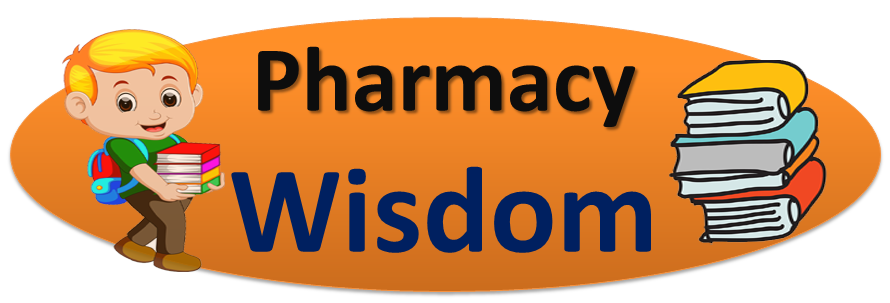
Pharmaceuticals Organic Chemistry I - B. Pharma 2nd Semester Notes Pdf
BP202T. PHARMACEUTICAL ORGANIC CHEMISTRY –I (Theory)
Scope: This subject deals with classification and nomenclature of simple organic compounds, structural isomerism, intermediates forming in reactions, important physical properties, reactions and methods of preparation of these compounds. The syllabus also emphasizes on mechanisms and orientation of reactions.
Objectives: Upon completion of the course the student shall be able to
1. Write the structure, name and the type of isomerism of the organic compound
2. Write the reaction, name the reaction and orientation of reactions
3. Account for reactivity/stability of compounds,
4. Identify/confirm the identification of organic compound
Course Content:
General methods of preparation and reactions of compounds superscripted with asterisk (*) to be explained
To emphasize on definition, types, classification, principles/mechanisms, applications, examples and differences
UNIT-I
Classification, nomenclature and isomerism
Classification of Organic Compounds
Common and IUPAC systems of nomenclature of organic compounds (up to 10 Carbons open chain and carbocyclic compounds) Structural isomerisms in organic compounds
UNIT-II
Alkanes*, Alkenes* and Conjugated dienes*
SP3 hybridization in alkanes, Halogenation of alkanes, uses of paraffins. Stabilities of alkenes, SP2 hybridization in alkenes
E1 and E2 reactions – kinetics, order of reactivity of alkyl halides, rearrangement of carbocations, Saytzeffs orientation and evidences. E1 verses E2 reactions, Factors affecting E1 and E2 reactions. Ozonolysis, electrophilic addition reactions of alkenes, Markownikoff’s orientation, free radical addition reactions of alkenes, Anti Markownikoff’s orientation.
Stability of conjugated dienes, Diel-Alder, electrophilic addition, free radical addition reactions of conjugated dienes, allylic rearrangement
UNIT-III
Alkyl halides*
SN1 and SN2 reactions - kinetics, order of reactivity of alkyl halides, stereochemistry and rearrangement of carbocations.
SN1 versus SN2 reactions, Factors affecting SN1 and SN2 reactions
Structure and uses of ethylchloride, Chloroform, trichloroethylene, tetrachloroethylene, dichloromethane, tetrachloromethane and iodoform.
Alcohols*-Qualitative tests, Structure and uses of Ethyl alcohol, Methyl alcohol, chlorobutanol, Cetosteryl alcohol, Benz yl alcohol, Glycerol, Propylene gl ycol
UNIT-IV
Carbonyl compounds* (Aldehydes and ketones)
Nucleophilic addition, Electromeric effect, aldol condensation, Crossed Aldol condensation, Cannizzaro reaction, Crossed Cannizzaro reaction, Benzoin condensation, Perkin condensation, qualitative tests, Structure and uses of Formaldehyde, Paraldehyde, Acetone, Chloral hydrate, Hexamine, Benzaldehyde, Vanilin, Cinnamaldehyde.
UNIT-V
Carboxylic acids*
Acidity of carbox ylic acids, effect of substituents on acidity, inductive effect and qualitative tests for carboxylic acids, amide and ester
Structure and Uses of Acetic acid, Lactic acid, Tartaric acid, Citric acid, Succinic acid. Oxalic acid, Salicylic acid, Benzoic acid, Benzyl benzoate, Dimethyl phthalate, Methyl salicylate and Acetyl salicylic acid
Aliphatic amines* -Basicity, effect of substituent on Basicity. Qualitative test, Structure and uses of Ethanolamine, Ethylenediamine, Amphetamine
BP208P. PHARMACEUTICAL ORGANIC CHEMISTRY -I (Practical)
1. Systematic qualitative analysis of unknown organic compounds like
1. Preliminary test: Color, odour, aliphatic/aromatic compounds, saturation and unsaturation, etc.
2. Detection of elements like Nitrogen, Sulphur and Halogen by Lassaigne’s test
3. Solubility test
4. Functional group test like Phenols, Amides/Urea, Carbohydrates, Amines, Carboxylic acids, Aldehydes and Ketones, Alcohols, Esters, Aromatic and Halogenated Hydrocarbons, Nitro compounds and Anilides.
5. Melting point/Boiling point of organic compounds
6. Identification of the unknown compound from the literature using melting point/ boiling point.
7. Preparation of the derivatives and confirmation of the unknown compound by melting point/ boiling point.
8. Minimum 5 unknown organic compounds to be analysed systematically.
2. Preparation of suitable solid derivatives from organic compounds
3. Construction of molecular models
Recommended Books (Latest Editions)
1. Organic Chemistry by Morrison and Boyd
2. Organic Chemistry by I.L. Finar , Volume-I
3. Textbook of Organic Chemistry by B.S. Bahl & Arun Bahl.
4. Organic Chemistry by P.L.Soni
5. Practical Organic Chemistry by Mann and Saunders.
6. Vogel’s text book of Practical Organic Chemistry
7. Advanced Practical organic chemistry by N.K.Vishnoi.
8. Introduction to Organic Laboratory techniques by Pavia, Lampman and Kriz.
9. Reaction and reaction mechanism by Ahluwaliah/Chatwal.


0 Comments: